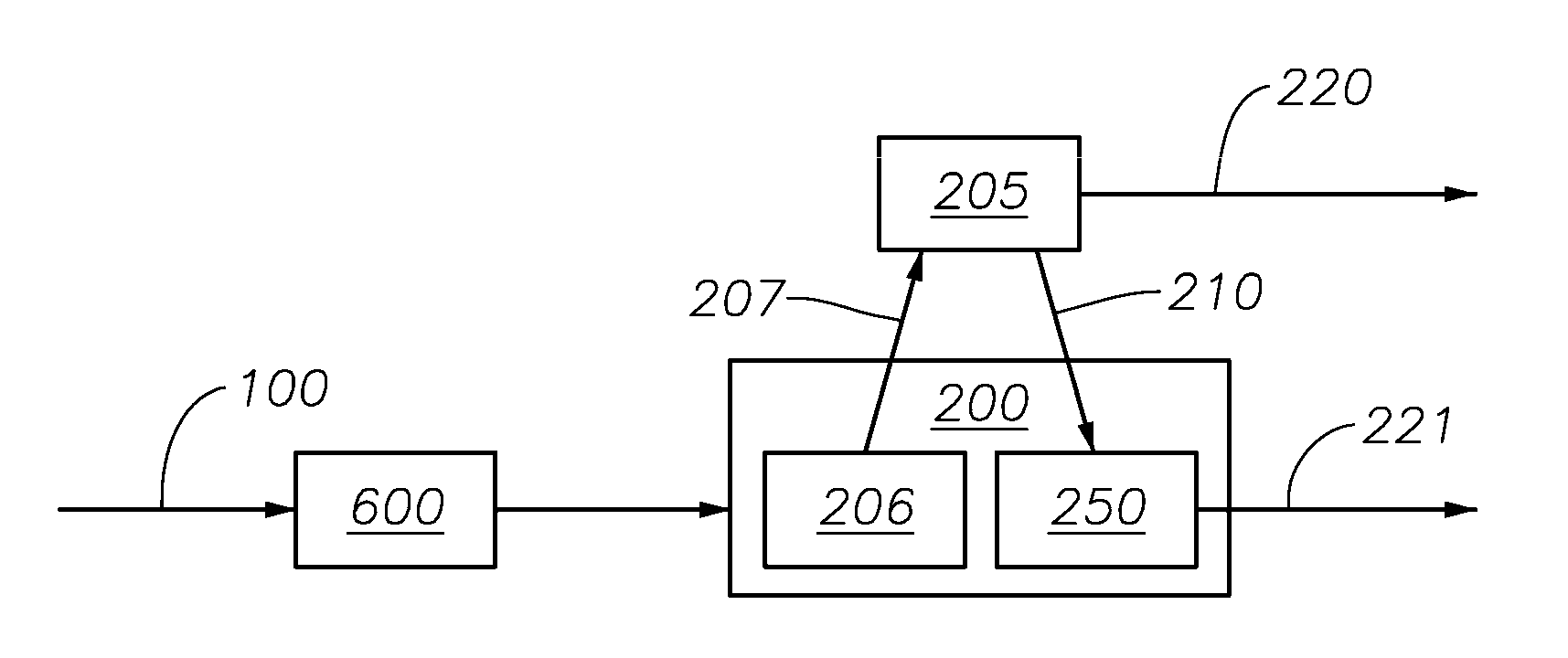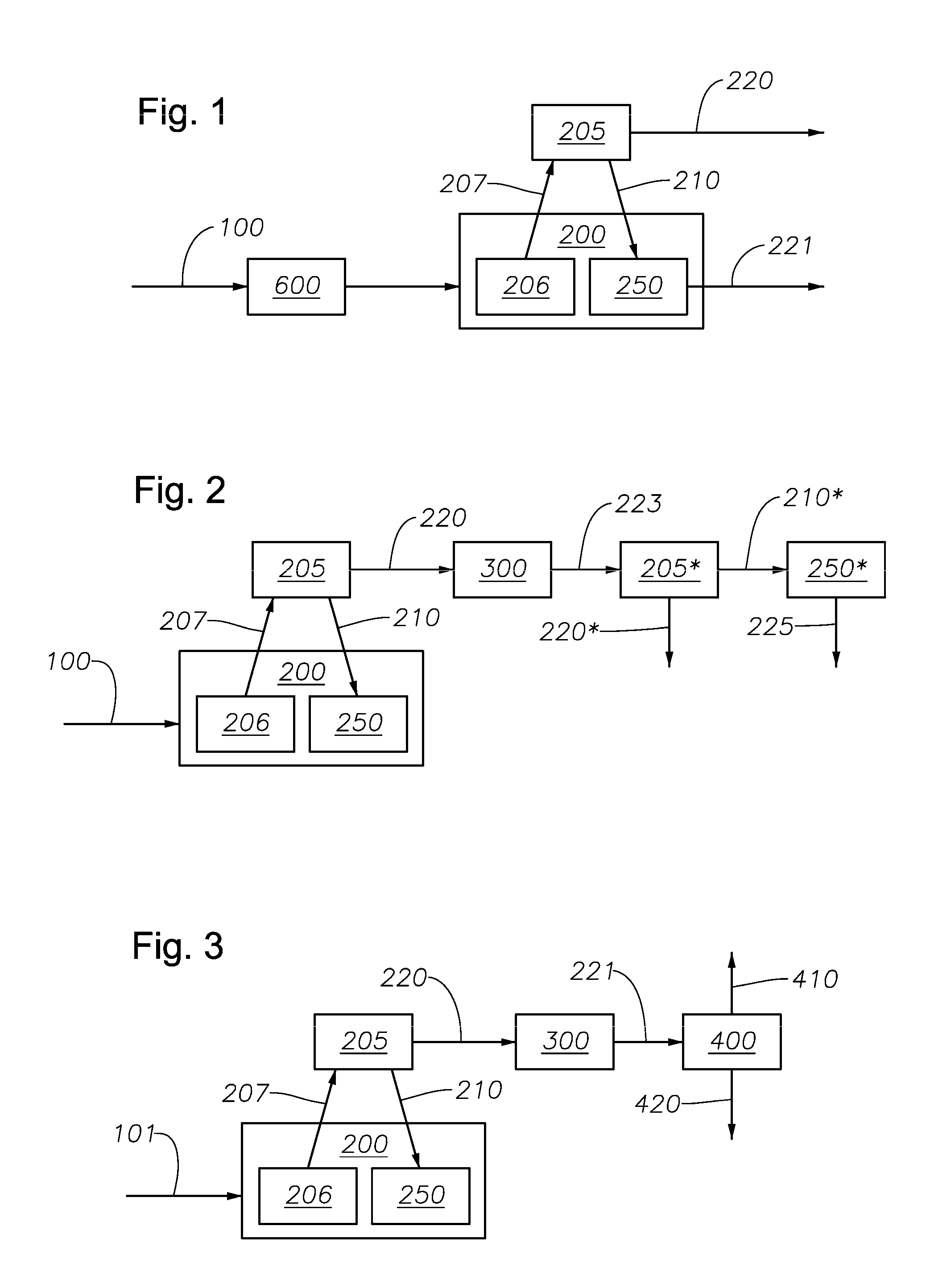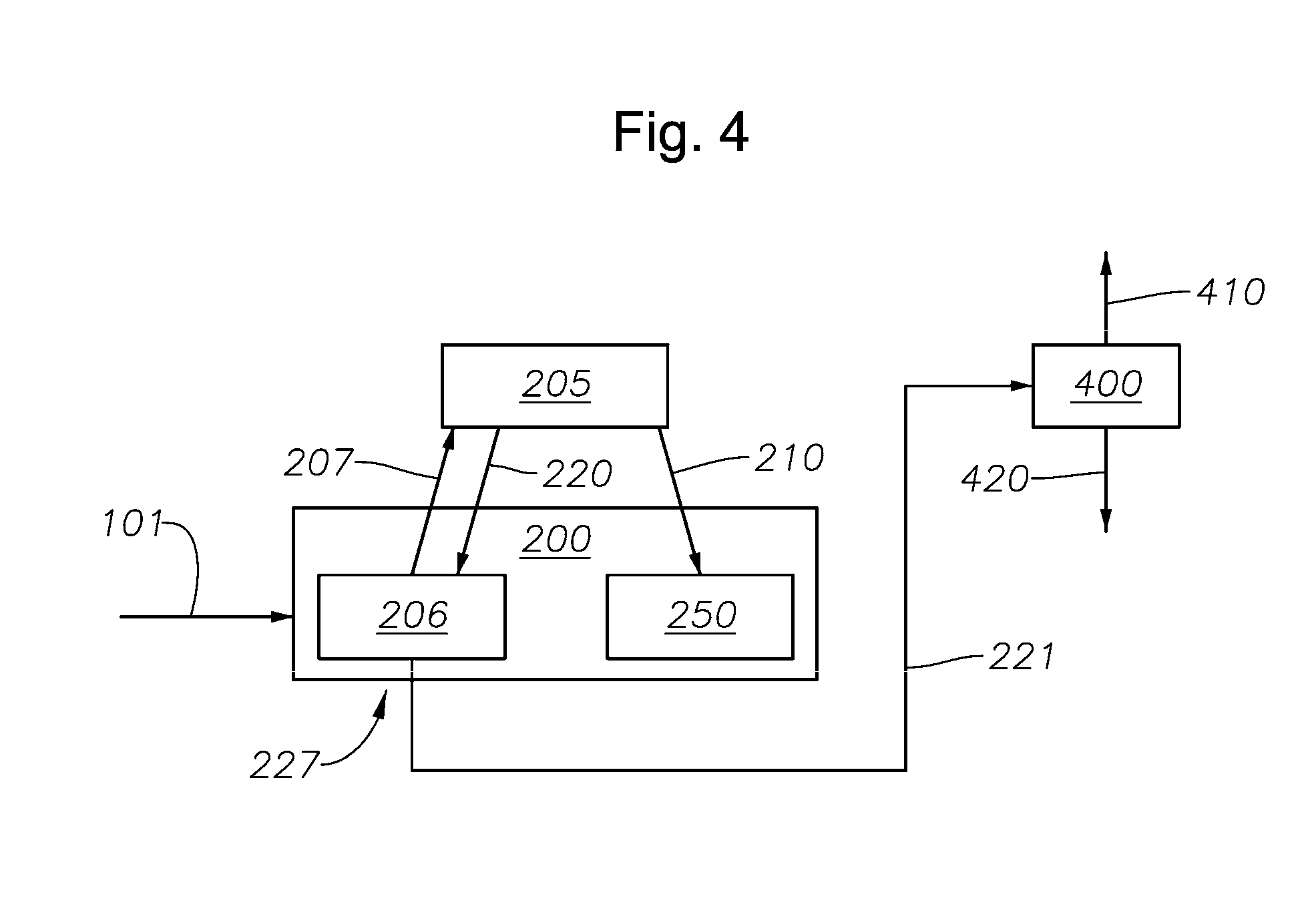Integrated process for steam cracking
a technology of steam cracking furnace and integrated process, which is applied in the direction of separation process, hydrocarbon oil treatment product, furnace, etc., can solve the problems of increasing the overall process cost, limiting the processing of most steam cracking furnaces, and prone to severe fouling in conventional steam cracking processes
- Summary
- Abstract
- Description
- Claims
- Application Information
AI Technical Summary
Benefits of technology
Problems solved by technology
Method used
Image
Examples
examples
[0137]A series of three vacuum resids with variable quality and hydrogen content were subjected to coking conditions as summarized in Table 1. The coking conditions were chosen to be milder in severity than normal practice in order to maximize 1050° F.− cut liquid products with reduced light gas production. Products from the coking reaction were analyzed to determine the yields of naphtha, distillate, and gas oil and to determine basic liquid product qualities (gravity, hydrogen content, etc).
[0138]Steam cracking process simulation models were then used to estimate the yields of chemical products that can be produced from the full boiling range coker product. Selected steam cracker product yields are highlighted in Table 2. It can be readily seen that this coking plus steam cracking process enables production of a high yield of chemical products from the vacuum resid including ethylene, propylene, and butenes. High olefin yields are favored when the starting vacuum resid has a highe...
PUM
| Property | Measurement | Unit |
|---|---|---|
| temperature | aaaaa | aaaaa |
| temperature | aaaaa | aaaaa |
| temperature | aaaaa | aaaaa |
Abstract
Description
Claims
Application Information
 Login to View More
Login to View More - R&D
- Intellectual Property
- Life Sciences
- Materials
- Tech Scout
- Unparalleled Data Quality
- Higher Quality Content
- 60% Fewer Hallucinations
Browse by: Latest US Patents, China's latest patents, Technical Efficacy Thesaurus, Application Domain, Technology Topic, Popular Technical Reports.
© 2025 PatSnap. All rights reserved.Legal|Privacy policy|Modern Slavery Act Transparency Statement|Sitemap|About US| Contact US: help@patsnap.com



